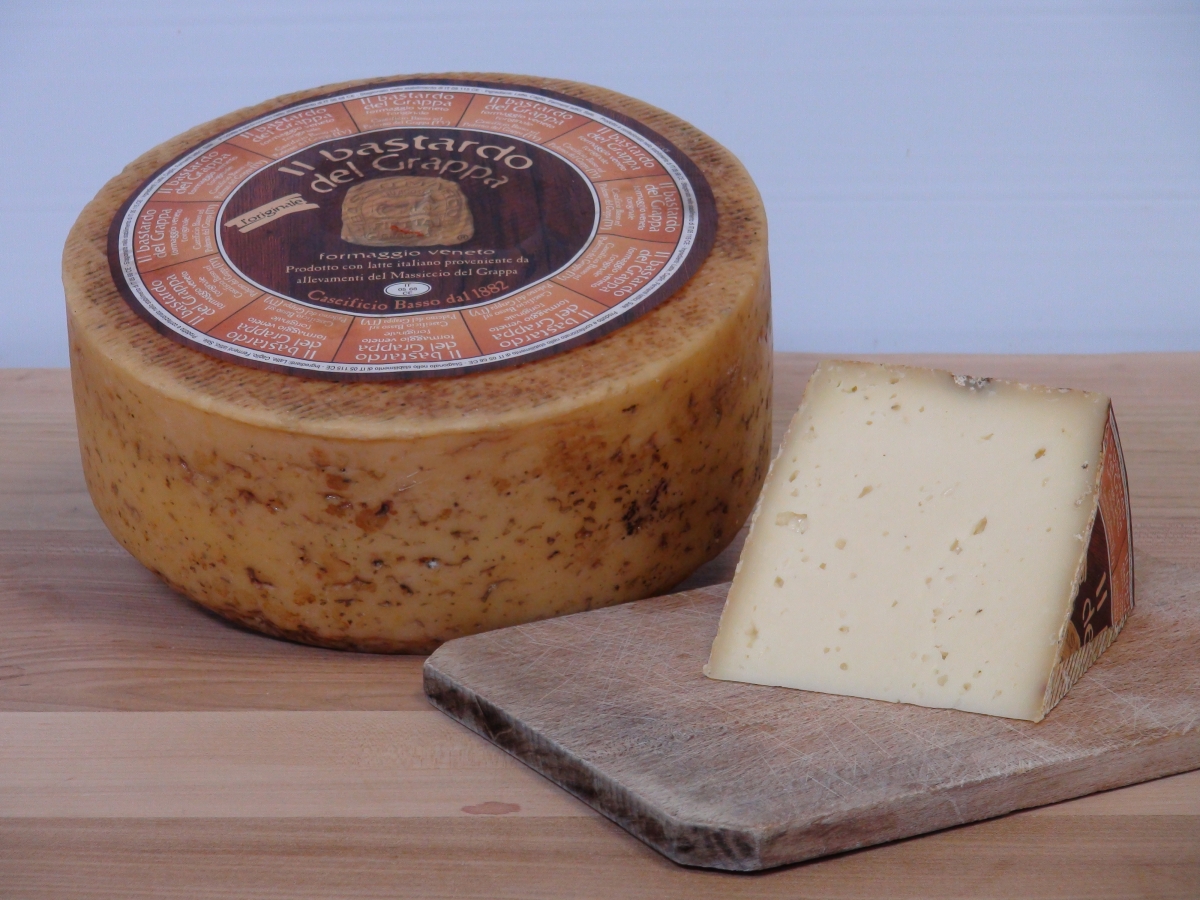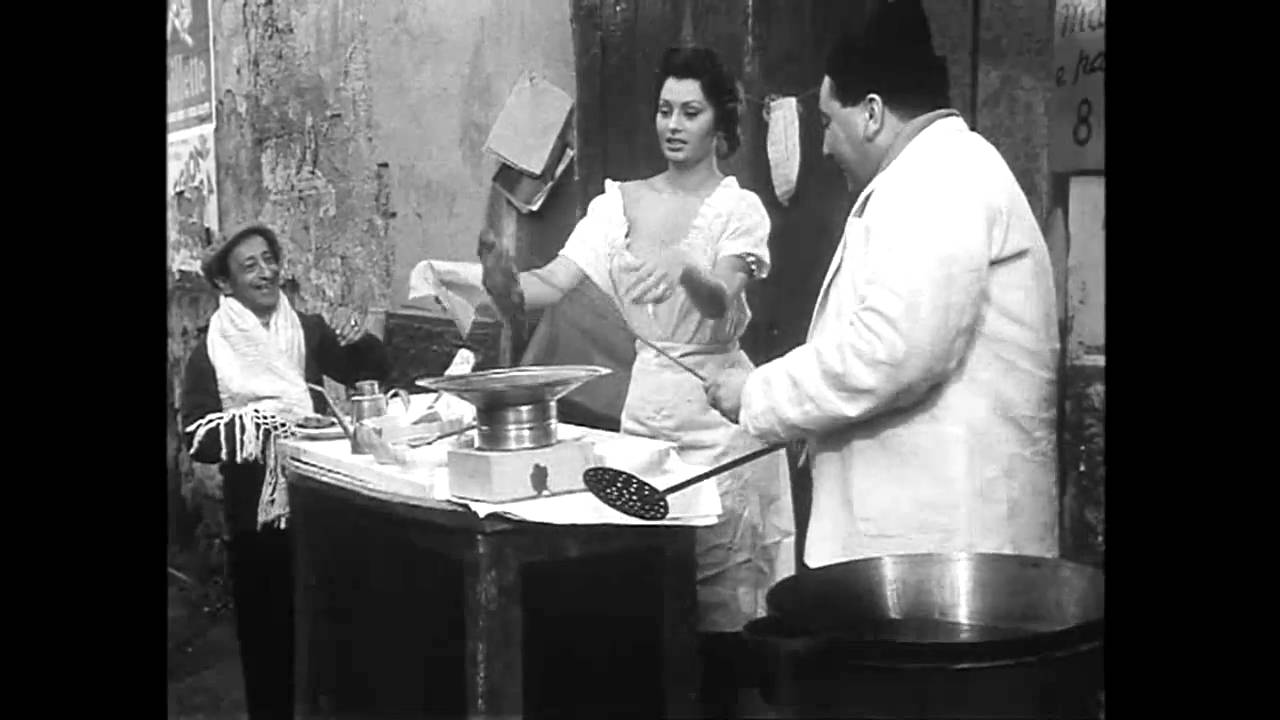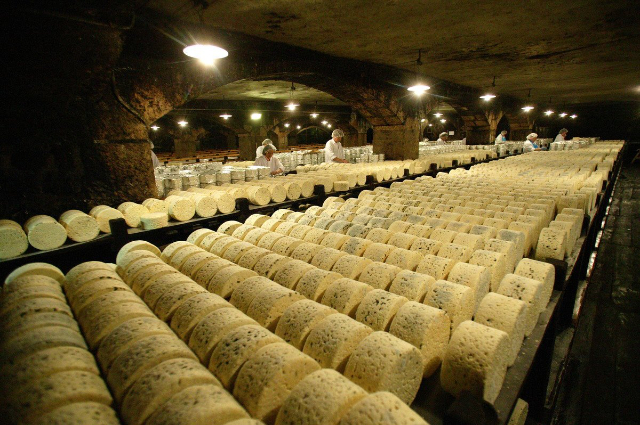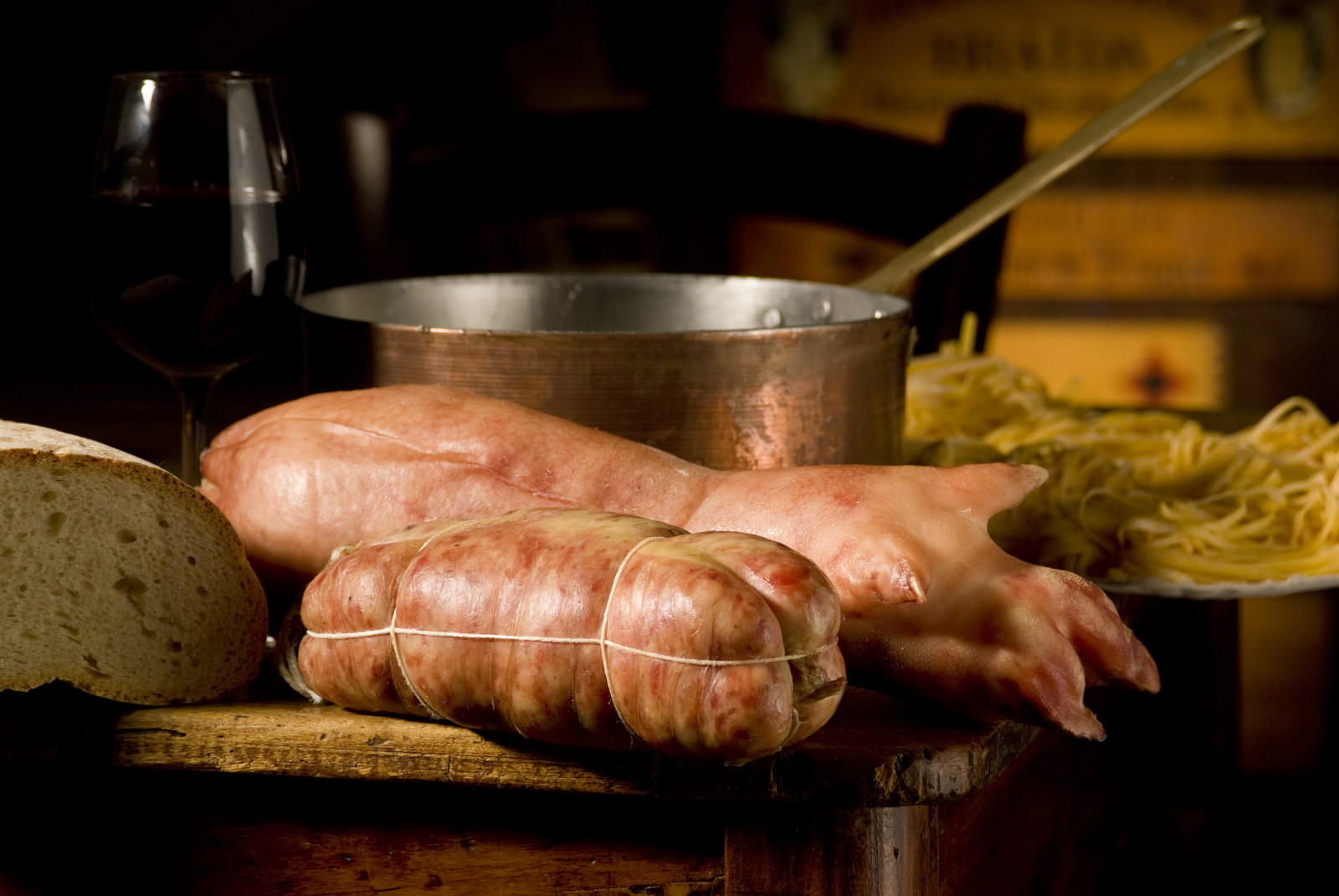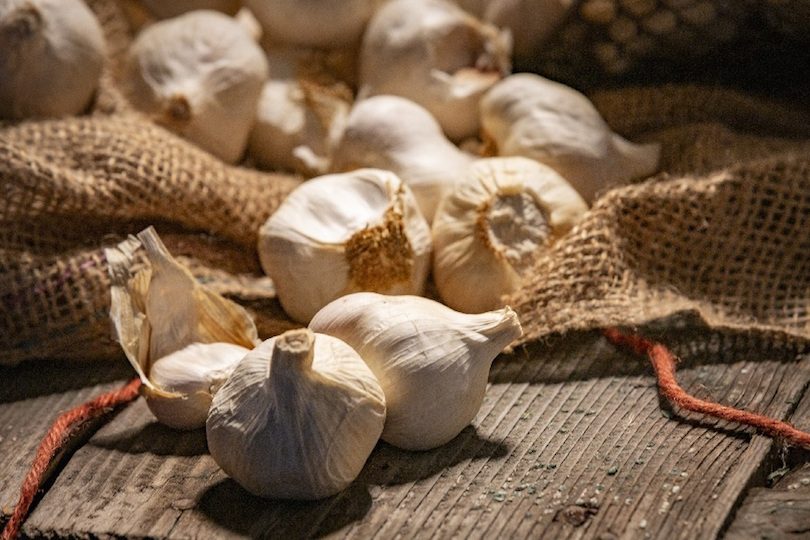"Bastard" cheese is a cheese whose production dates back to the 1800s, a time when it was made in the mountain pastures of Veneto. Named so because it is a processing hybrid between pressed Asiago and fostered Asiago. It is a traditional product of the Grappa mountain pastures. It seems likely that the spread of this type of cheese took development after World War II as less precarious economic and social conditions became established.
The considerable diversity of environments present in Grappa ensures forages with very rich and varied flora. This makes it possible to bring a greater richness of aromas and flavors to the milk.
It is a cheese made from semi-fat cow’s milk, rennet curdling, with a semi-cooked paste. Obtained in alpine dairies from raw milk, partially skimmed by skimming, or in downstream factories, subjected to heat treatment. It has a cylindrical shape, weighing from 2.5 to 5 kg, diameter 20-35 cm, straight heel 5-8 cm high, flat faces, dry and clean rind. The paste is soft, straw-colored, with small eyes, color more pronounced when ripe. Maturation also brings changes to the texture of the paste, which becomes progressively grainier but absolutely firm. Sweet, savory flavor that becomes more intense when aged, pleasant aroma becomes more pronounced when mature.
At the malga, the milk from the evening milking is placed in outcrop tanks in a ventilated room called "Cason dell’Aria," and left there until the next morning. It is then separated from the fat matter, placed in copper caldera and mixed with the milk from the morning milking, to be heated to a temperature between 38° and 42° C, and rennet is added. The curd is allowed to rest for 25 to 30 minutes, then broken finely and heated again to 48° to 50° C. It is divided into appropriately sized portions, which are extracted by cloths and then placed in perforated molds to allow the whey to be drained off, then in wooden molds and lightly pressed. The cheese is left to rest, in "cason del fogo" for 2-3 days, until the paste takes on a soft consinstence. Salting lasts for 4-5 days. Maturation takes place in a suitable room called "casarin" for at least 25 days. Aging can exceed one year. During this stay, the cheese is turned frequently to encourage drying and subjected to scraping and oiling to eliminate any mold that may be present.
Bastardo del Grappa cheese should be eaten raw as an appetizer or as a main course but can also be fried or grilled.
